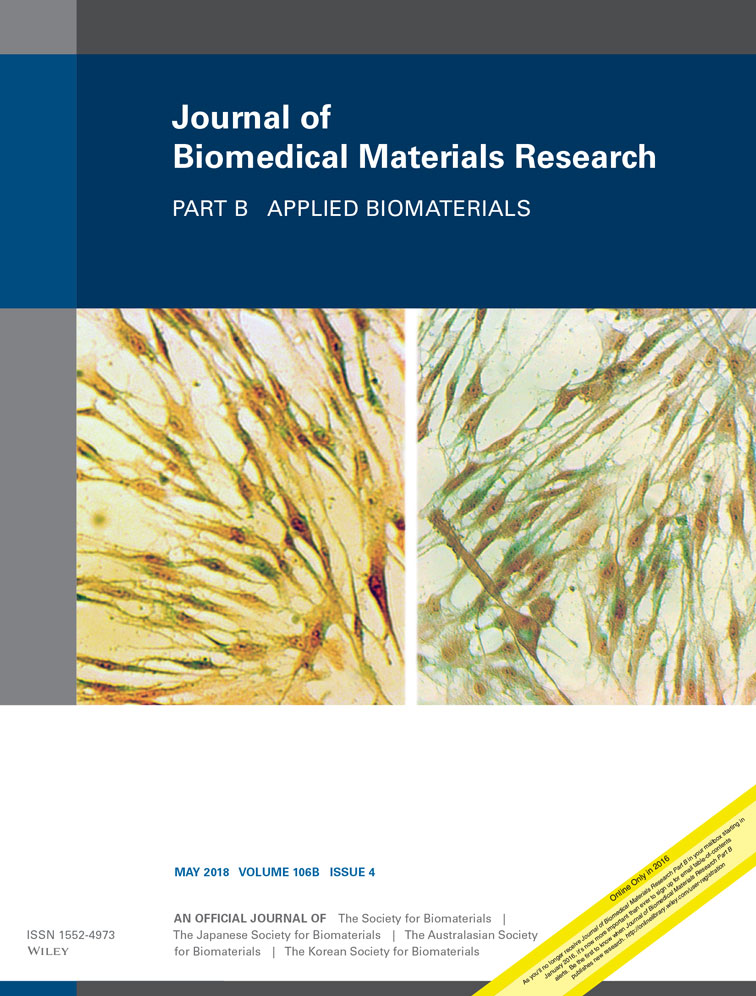Surface cross-linked ultra high molecular weight polyethylene by emulsified diffusion of dicumyl peroxide
Abstract
Cross-linking improves the wear resistance of ultrahigh molecular weight polyethylene (UHMWPE) used in hip and knee implants. Free radicals, generated by ionizing radiation or chemically, react to form cross-links. Limiting cross-linking to the articulating surface of the implant is desirable to enable high wear resistance on the surface and higher strength and toughness in the bulk. We investigated the diffusion of emulsified dicumyl peroxide (DCP) into vitamin E-blended UHMWPE (0.1 and 0.3 wt. % vitamin-E) with subsequent thermal decomposition in situ to obtain surface cross-linking with the objective of achieving surface wear rate equivalent or lower than that of current clinically available materials. We diffused emulsified DCP at 100°C followed by in situ decomposition at 150°C. We also assessed the effect of having vitamin-E in the DCP emulsion. The oxidative stability of the treated samples increased with increasing vitamin E concentration in the blend and by incorporating vitamin E into the peroxide emulsion. The impact strength of a surface cross-linked, 0.3 wt% vitamin E blended UHMWPE prepared using this method was superior to a clinically available irradiated and melted highly cross-linked UHMWPE while the wear resistance was comparable. These results showed the feasibility of surface cross-linking using emulsified peroxide diffusion as a method of making tough and wear resistant joint implant bearing surfaces. © 2017 Wiley Periodicals, Inc. J Biomed Mater Res Part B: Appl Biomater, 106B: 1517–1523, 2018.




